Original: "Validator Health Report: October 2023"
Author: Solana Foundation
Translation: Odaily Planet Daily
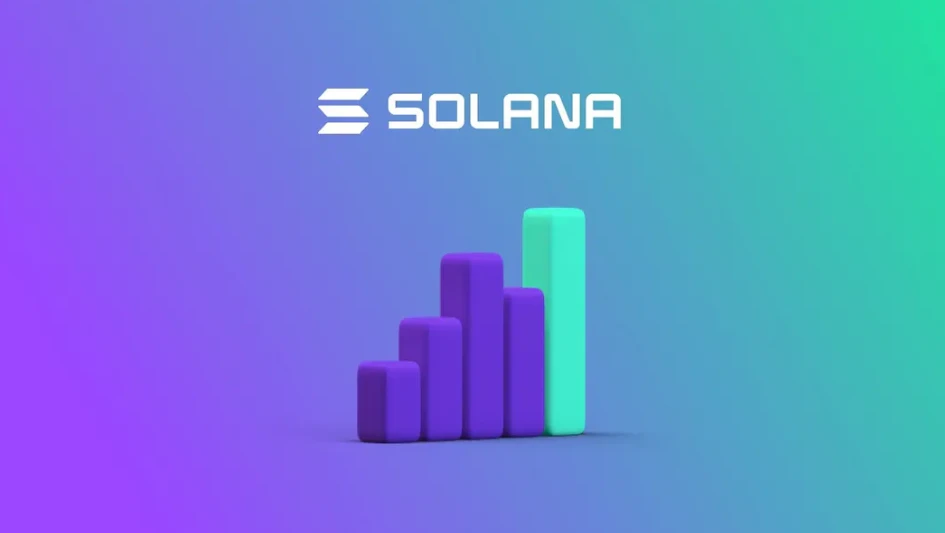
Recently, the Solana Foundation released the "Validator Health Report."
The report shows that the Solana validator network is continuously growing and is measured by indicators such as the number of nodes, Nakamoto coefficient, and client diversity. The health of the validator network is a key focus for the Solana Foundation, which provides tools and education to help global validators and stakeholders participate in the network's security. Additionally, the foundation encourages community participation and contribution.
The participation of Solana's validator network has significantly increased. The community has organized regular phone and virtual meetings to facilitate communication and sharing of best practices among validators. Furthermore, the foundation plans to hold the Block 0 conference in the future to further strengthen community connections.
Solana's network has developed multiple validator clients, including Solana Labs, Jito Labs, Firedancer, Sig, and lightweight clients. Client diversity is crucial for the health and decentralization of the network, as it can mitigate the risk of a single point of failure and enhance network resilience.
The Nakamoto coefficient is an important indicator of network security. Solana's current Nakamoto coefficient is 31, but the foundation aims to further increase this number to enhance network decentralization.
In terms of Solana's stake distribution, the network is geographically balanced, with no single country having absolute dominance. The foundation closely monitors the distribution of stakes and takes action to enhance geographical diversity.
The following is the original report, compiled by Odaily Planet Daily.
Overview
The Solana validator network continues to grow and has been measured by indicators such as the number of nodes, N distribution, and diversity. It is noteworthy that since the last validator health report: Solana has made rapid progress as a multi-client network, with over 31% of stakes running through JitoLabs. Additionally, two other validator clients are in development, a significant increase from 0% a year ago. The network's uptime has reached 100%. Since February 26, 2023, various new software upgrade procedures have been implemented, and there have been no performance declines since then. As of September 6, 2023, Solana remains one of the largest PoS networks globally, with numerous nodes and a wide distribution, as measured by the Nakamoto coefficient and validator software clients.
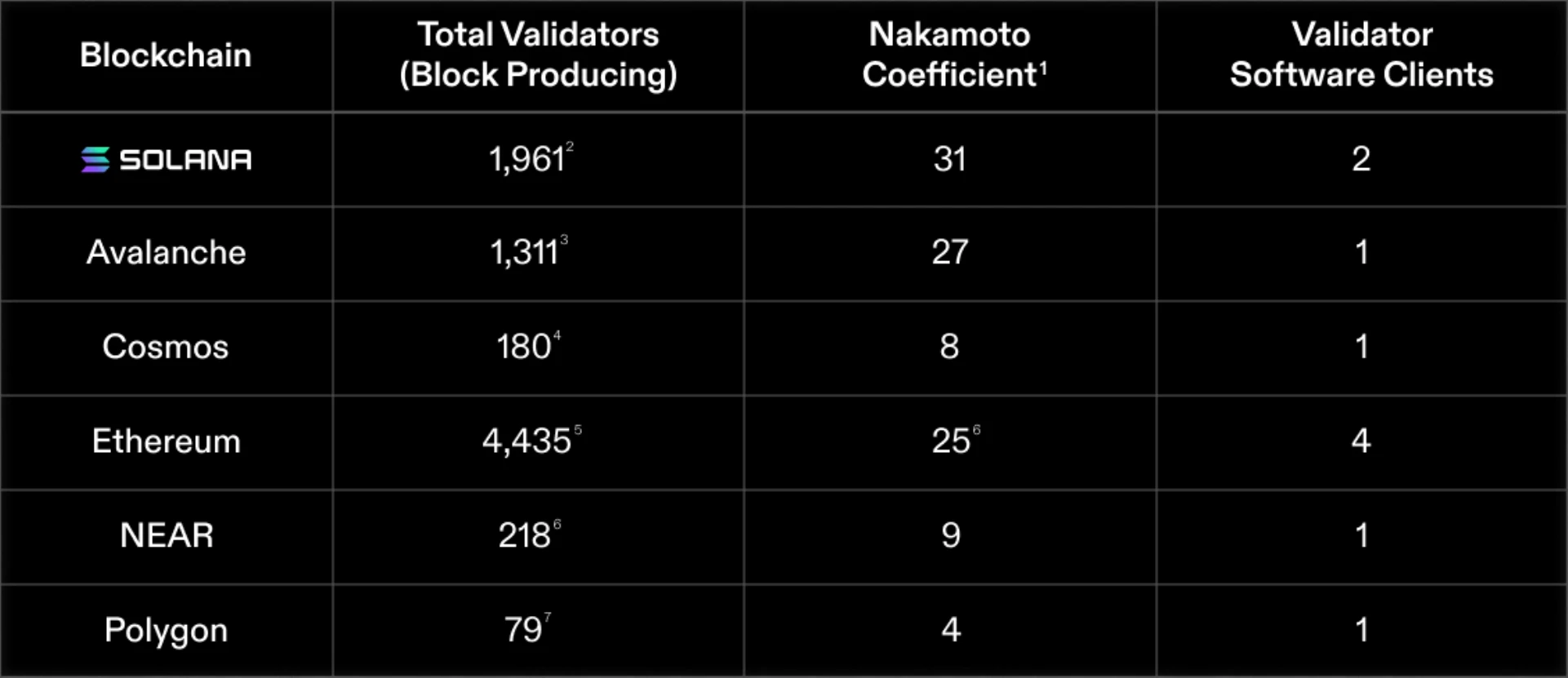
The Solana Foundation also noted a significant increase in the participation of the validator network in recent months. While it is difficult to measure with hard data, some indicators of validator community participation include:
Regular community-led validator phone meetings: Starting from March 2023, the validator ecosystem began planning and convening regular phone meetings for validators to share notes and best practices.
Block 0 conference: The validator community will hold the first Block 0 conference in Amsterdam on October 30, 2023. This is a community-organized event aimed at discussing the development of the Solana network and strengthening social connections.
The mainnet of Solana was launched in March 2020 and has made significant progress over the past three and a half years. During this time, the ecosystem has developed substantially. The Solana Foundation strives to be rigorous and rational in evaluating the network's health and enhancing its resilience and opportunities, encouraging the community to share their ideas.
Core Client Development
In the previous validator health report, the foundation discussed the evolving thinking on the best ways to measure and evaluate network health. In particular, the foundation has recently devoted significant effort to strengthening the software aspect of the validator network's health. In this regard, the foundation focuses on encouraging the development of new software clients and strengthening the core contributor developer network from multiple organizations.
Validators are computers running the Solana validator client, which is the operating system of the Solana network. In any blockchain network, having multiple software clients is crucial for the network's resilience and decentralization, helping to ensure that the network software does not have a single point of failure. One of the most significant victories the ecosystem has achieved is Solana becoming a multi-client network, allowing validators to choose to run different clients.
Current State of Solana
There are currently four different validator client implementations actively in development, built on three independent codebases. It is noteworthy that over 31% of Solana validators use the JitoLabs client, an increase from 16% in March 2023 (the previous validator health report), when it was 0% since the client's mainnet launch in August 2022.

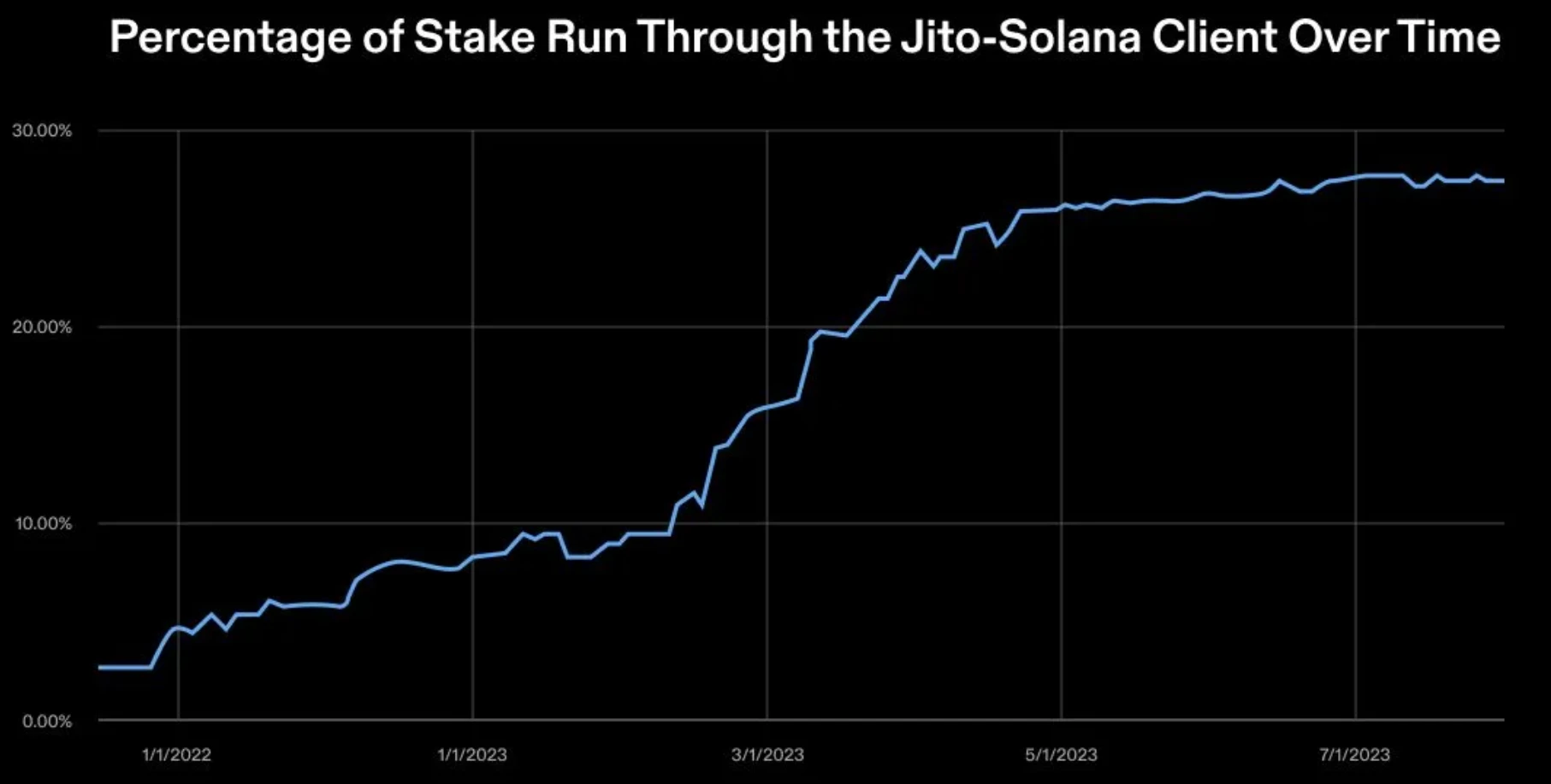
Client diversity is crucial for the long-term health and operation of the network. Through multiple validator clients, the risk of errors or malicious code present in a single client can be mitigated by other independent clients, which are less likely to have the same errors or be susceptible to the same malicious software attacks, reducing the likelihood of network interruptions.
The first validator client on Solana was initially developed by Solana Labs. Since then, several independent efforts have been made to create additional full or lightweight validator clients on the Solana network.
Jito Labs: In August 2022, Jito Labs released the second Solana mainnet validator client. This is a forked version based on Solana Labs' code, maintained, modified, and deployed by Jito Labs. However, as this is an independently built forked version, errors present in the Solana Labs client are likely to also exist in this client.
Firedancer: Also in August 2022, Jump Crypto announced plans to build a brand new validator client on Solana. This validator client is developed from scratch and has significant performance improvements. In a test environment, Firedancer can process up to one million transactions per second (compared to the original Solana Labs client, which processes approximately 55,000 transactions per second in a similar test environment).
Sig: In July 2023, Syndica announced the development of the Solana network validator client Sig, written in the Zig programming language. In September 2023, Syndica's validator team released the initial implementation of Sig, including the implementation of the Gossip protocol.
Lightweight clients (such as TinyDancer): In addition to these four validator clients, TinyDancer is a lightweight client for Solana that is actively being developed. TinyDancer does not participate in blockchain consensus for block building and state maintenance, but allows users to easily validate without running a full node themselves.
Total Number of Validators
Blockchain with more validators is generally more resilient. When users execute contracts on a blockchain, they need to be confident that their transactions will be recorded. Ideally, every transaction added to the blockchain is recorded by every validator on the chain, which is why having more validators is important; a large and diverse set of validators can protect against catastrophic events like data center power outages.
There are two types of validators: Consensus nodes: Consensus nodes play a core role in the operation of the network, providing two fundamental functions:
- Proposing new blocks to the network and voting on the validity of blocks proposed by other nodes.
RPC nodes: Remote Procedure Call (RPC) nodes are interfaces between applications and the Solana infrastructure. These nodes independently validate all new blocks and network changes, but do not vote.
Current State of Solana:
In March 2023, the total number of consensus nodes decreased from approximately 2200 to about 1700. This decrease was due to a large amount of staking being reallocated to nodes charging 100% commission. Stakeholders recognized this issue and reallocated their delegations to more active validators. Following this decrease, as of September 13, the number of consensus nodes has steadily increased to a total of 1961 consensus nodes and 2874 validator nodes.
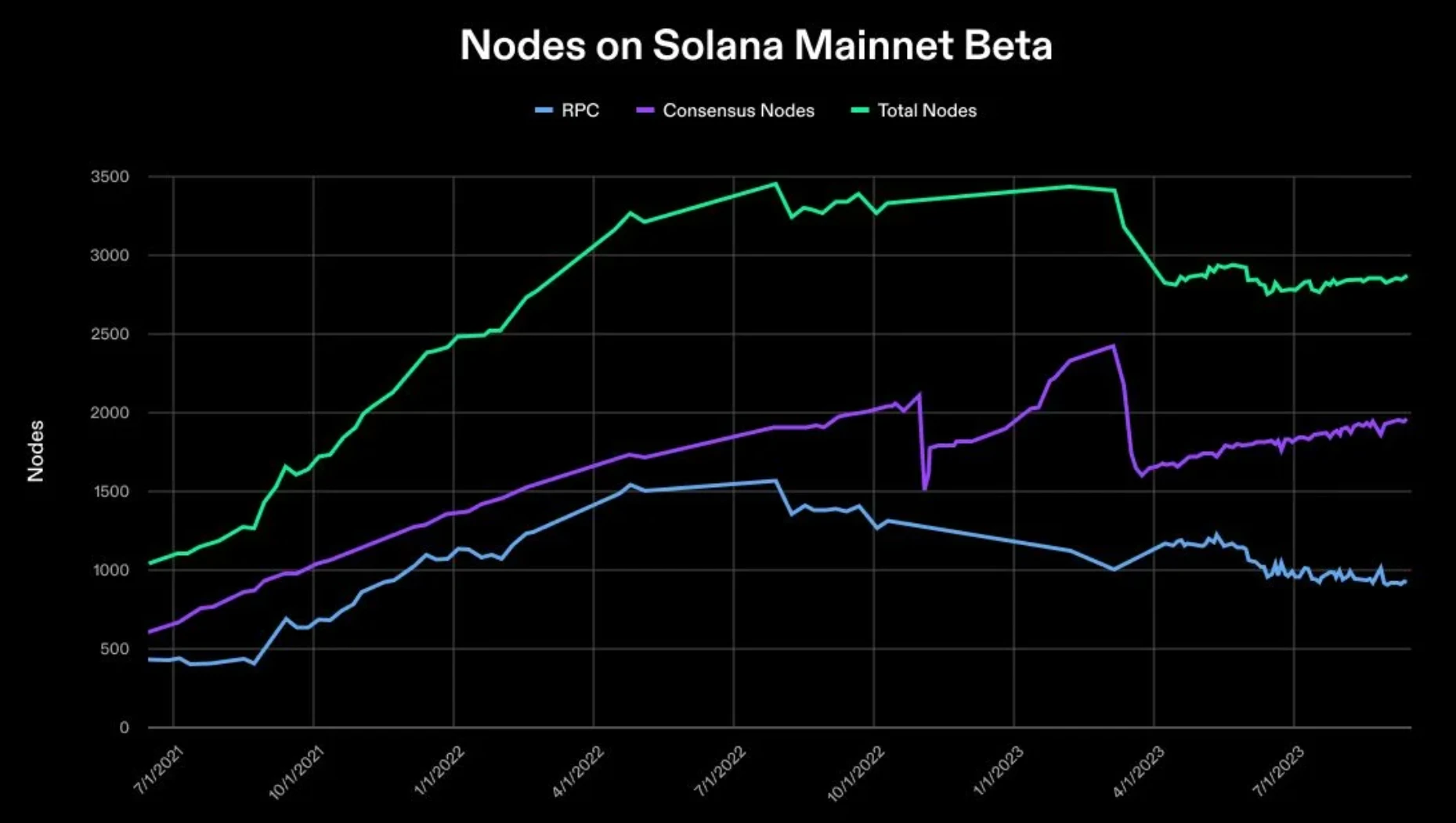
Compared to other proof-of-stake blockchains, Solana has a relatively high number of nodes. The foundation expects to adjust its plans in the coming months to encourage the quality of nodes, not just the quantity.
What constitutes a "high-quality validator" is subjective, but some examples include the node's uptime, hardware performance, level of service when users encounter issues, and the operator's activity in the broader validator community. The foundation has identified opportunities to encourage validators to meet these standards and will share and roll out these opportunities with the community in the coming months.
Nakamoto Coefficient of Voting Power
The Nakamoto coefficient of voting power is defined as the minimum number of nodes in the network that need to be compromised to carry out censorship of blocks or halt consensus, preventing some or all new blocks (and their transactions) from being confirmed. In most proof-of-stake networks, this is the minimum percentage of voting power needed, representing at least 33.4% of nodes.
When stake distribution is highly concentrated, a minority of validators may represent 33.4% of the total delegation (a tiny fraction). In a more distributed distribution of stake and consensus power, this set is larger, making it difficult for corporations, bad actors, or other entities to manipulate the blockchain through censorship.
Current State of Solana:
In the survey on September 6, 2023, Solana's Nakamoto coefficient is 31. This means that a minimum of 31 validators would need to collude (as of March 2023) to carry out censorship on the network. This Nakamoto coefficient is the same as the result in the previous validator health report, also at 31.
Solana's Nakamoto coefficient has steadily increased since its launch in March 2020, continuing through September 2022, and has remained relatively stable since then. A Nakamoto coefficient of 31 is strong. While the foundation hopes for this number to increase over time, it cannot be used as a leading indicator of network decentralization based on the growth of the number, as the Solana network is viewed from the perspective of stake distribution.
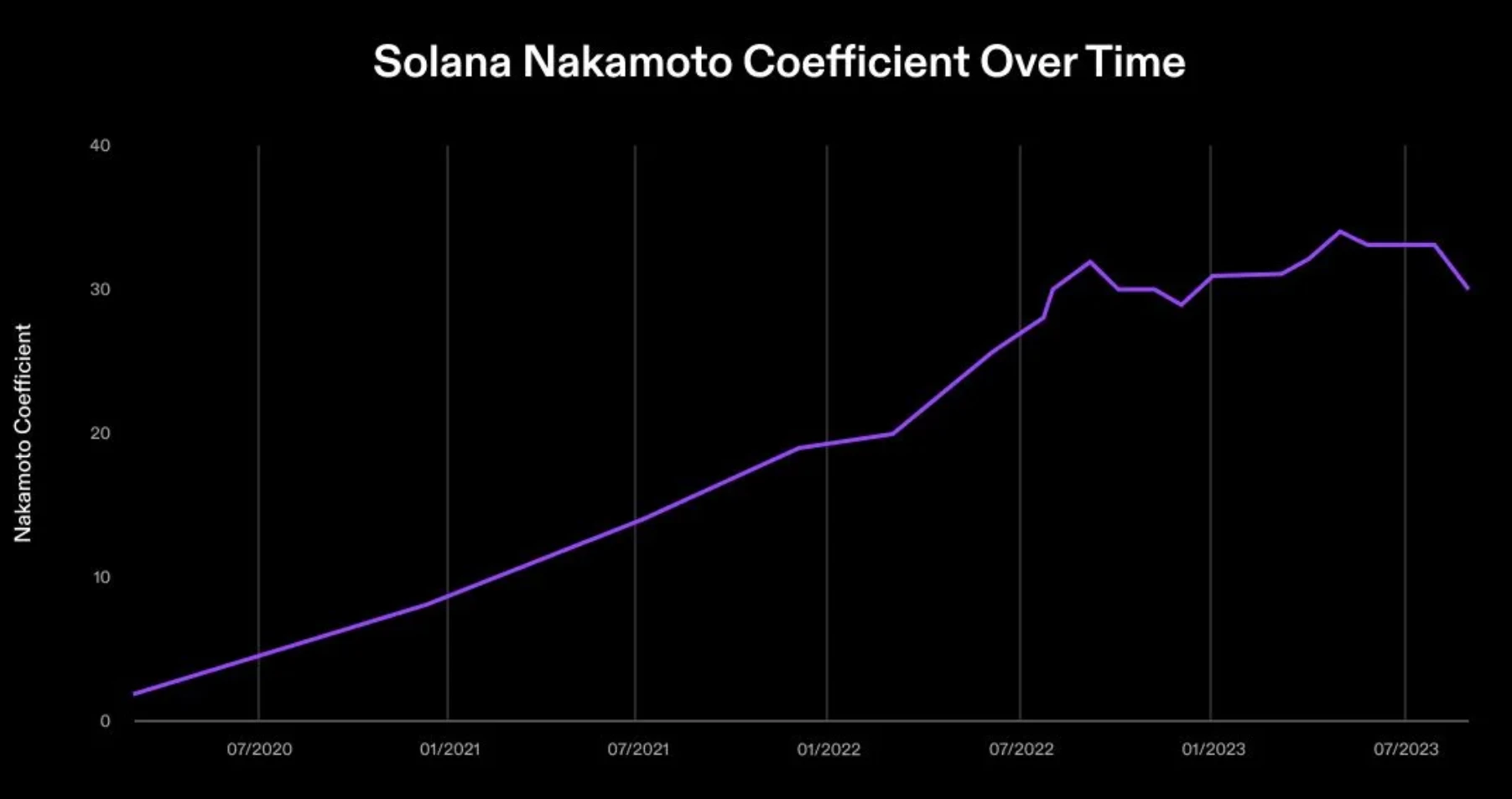
Below are some Nakamoto coefficients of other proof-of-stake blockchains for benchmark comparison:
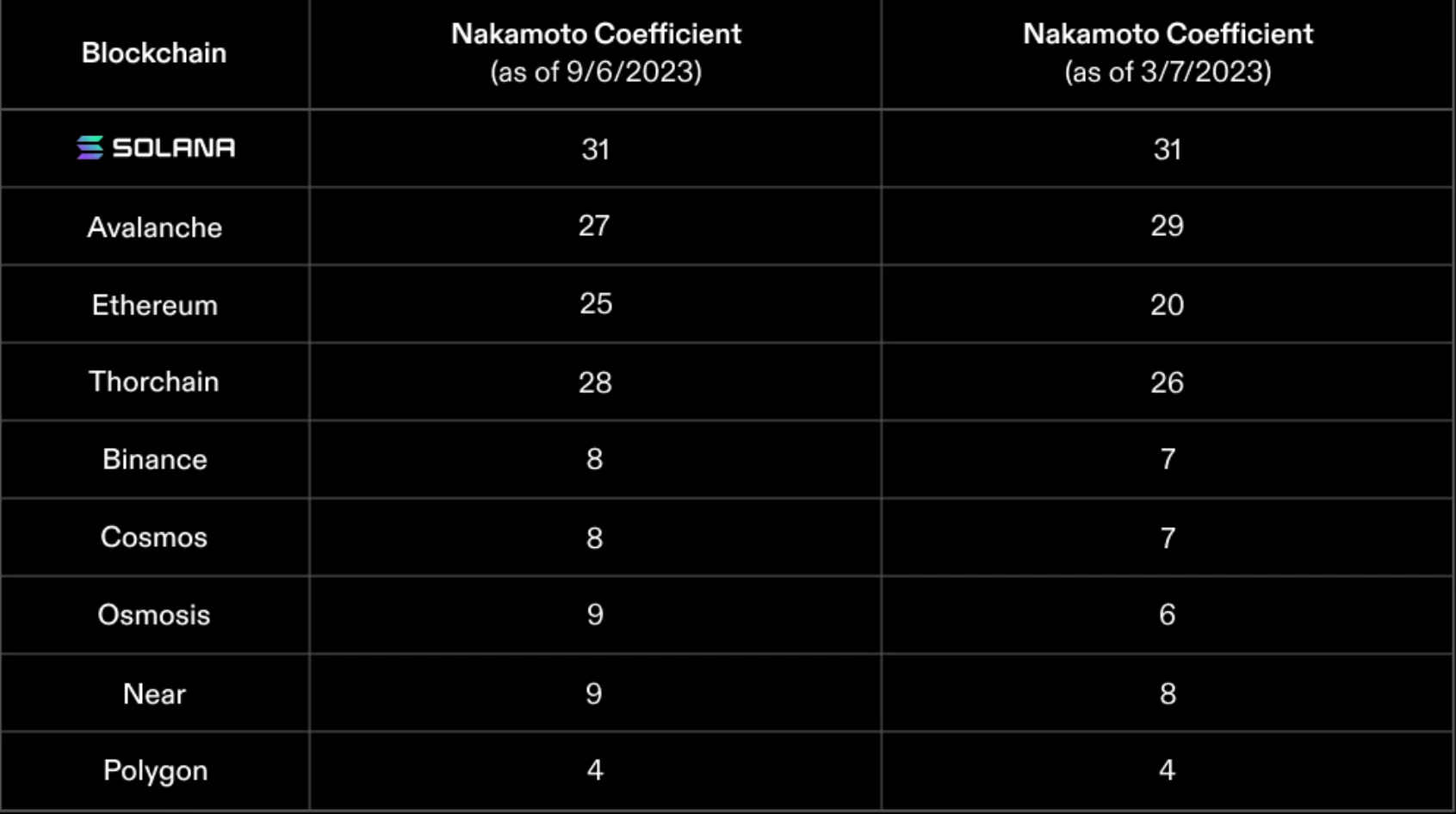
Even a large-scale, highly distributed network with multiple software clients is susceptible to several external factors that may affect the resilience of the blockchain. These factors will be discussed in the next section, which is also the final section.
Distribution
Nakamoto coefficient and client diversity are key indicators, but they cannot capture the human factors involved in running a blockchain. In terms of the health of the validator network, few appreciate the role of external factors, such as geopolitical, natural disasters, and corporate incentives.
In this final section, we will look at the resilience of the Solana network from the perspective of several external factors and how they may impact proof-of-stake networks like Solana.
Stake Distribution of Data Center Providers
Anyone can run a Solana node. Since the Solana protocol requires high-performance hardware, validator operators typically rent server space from third-party data centers to run their nodes. This is not uncommon; most computational power on blockchains is performed on servers in large data centers owned by third parties.
The risk of using third-party data centers to run validator nodes means that the owners of the data centers have disproportionate power over the operation of the blockchain. To minimize the risk of a company potentially harming the chain, stake should be relatively evenly distributed among private companies renting server space.
This risk emerged in November 2022 when server provider Hetzner blocked Solana nodes. It is worth noting that the network continued to operate during this time. This is equivalent to a 20% attack on the network, and also demonstrates why distributing stake among multiple server providers is so important.
Current State of Solana:
Data center providers typically operate multiple data centers and Autonomous System Numbers (ASN). The data below is segmented based on the ASN of the primary data center provider, according to publicly available data.
An Autonomous System (AS) is a network of servers with a single routing number. Different autonomous systems are identified by unique ASNs. Depending on the configuration of internal networks or routing, an autonomous system can span multiple physical locations across different geographical areas.
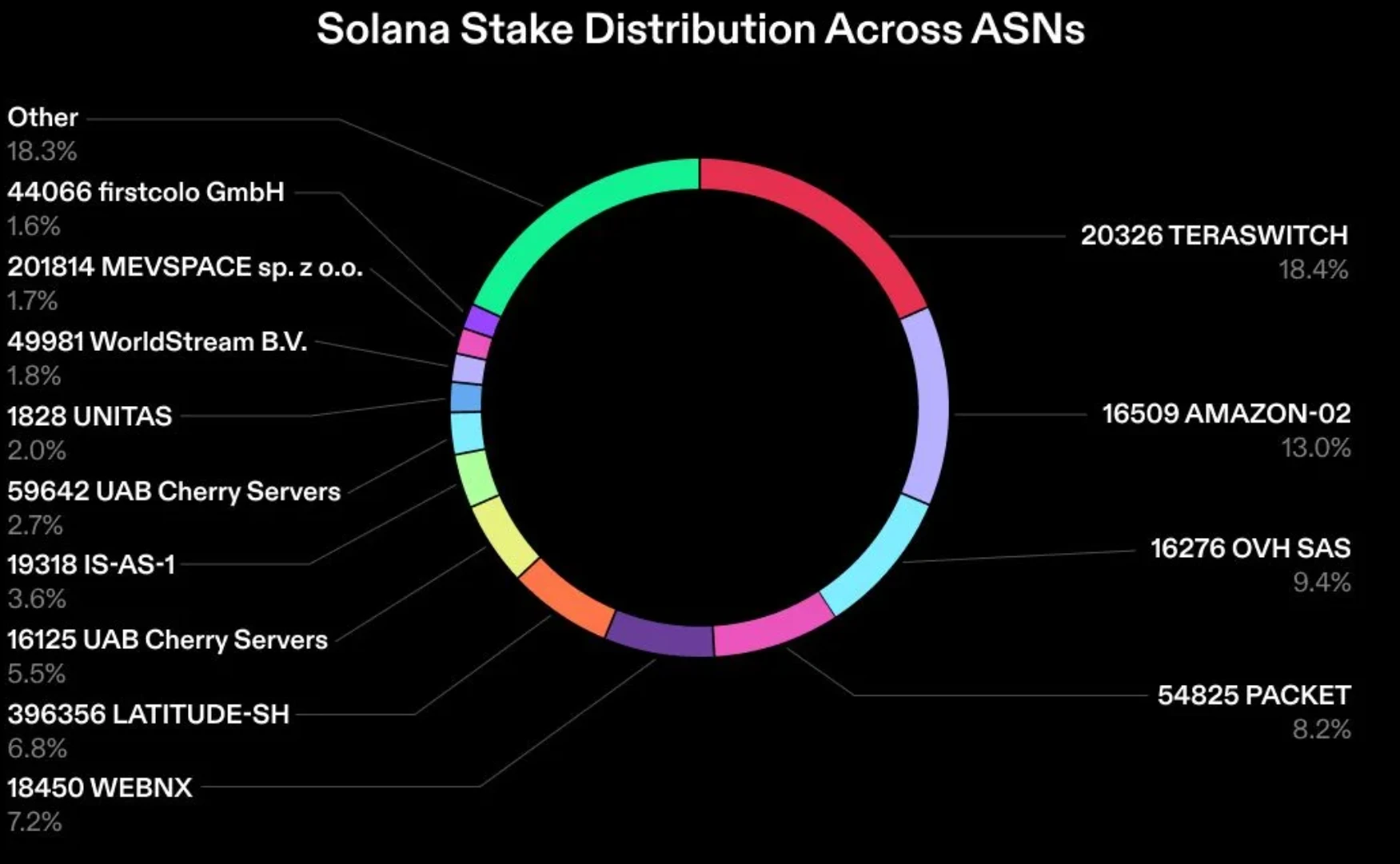
The stake distribution of Solana is relatively spread across Autonomous Systems (ASNs), with no single AS hosting close to 33.3% of active stake. Currently, at least three data centers would need to collude to combine over 33.3% of stake and halt the network.
Geographic Distribution of Stake
A globally resilient blockchain must continue to operate regardless of events in any region of the world. Consider the following scenarios:
- A government attacks the underwater internet cables transmitting internet and causes a complete internet outage in the entire region. A globally resilient blockchain must be able to continue operating unaffected by events in that region.
- An authoritarian regime is pursuing a dissident, and if the regime chooses to shut down blockchain servers operating within the country, the dissident must be confident she can access her funds.
- Natural disasters disrupt all nodes in a specific region. Users around the world using the blockchain still need to be confident that the chain will continue to operate even if many validators unexpectedly go offline.
In these scenarios, people still need to have confidence in the continued operation of the blockchain, even if many validators go offline unexpectedly.
Current State of Solana: Here is a snapshot of the network's geographic distribution organized by the percentage of stake in each country.
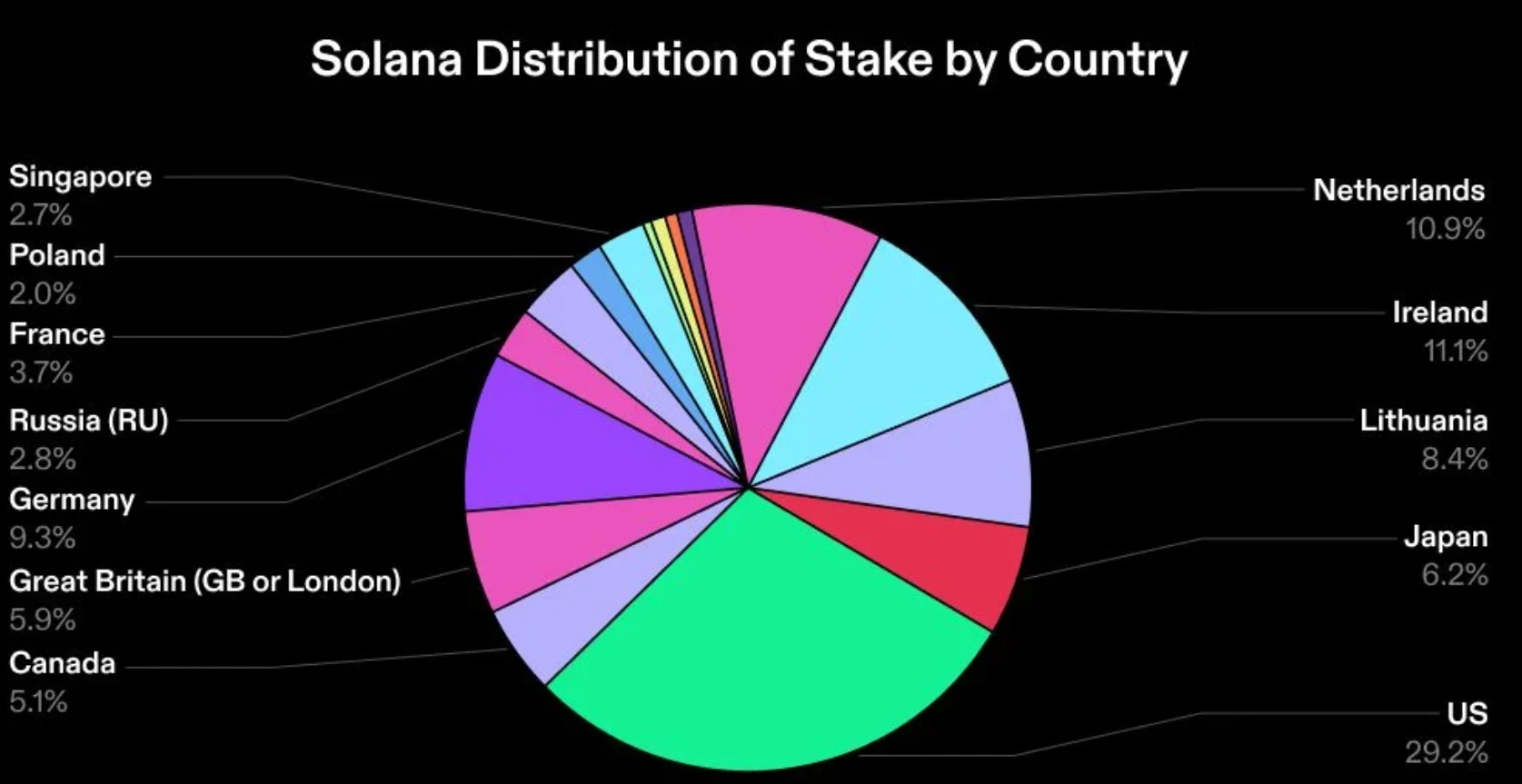
The network is geographically balanced, with no single country holding 33.3% of active stake, although the recent increase in earnings in the United States suggests they may eventually reach this percentage. It is worth noting that the total active stake in the United States and Canada is 34.3%. The stake percentages by country differ significantly from the absolute number of data centers in each country.
The stake in the United States has increased significantly, from 23.5% in the previous report to 29.2%. The foundation is working to address this issue, such as by closely monitoring this change, assisting stake pools in optimizing decentralization, and taking action to adjust their scoring algorithms to consider geographical factors.
Looking Ahead
The Solana Foundation continues to focus on improving the health of the validator network by providing tools and education to validators and stakeholders globally, encouraging community members to become thoughtful participants in network security. The foundation's focus has expanded to not only include community growth and the Nakamoto coefficient, but also some less quantifiable ways to improve the network's health.
The Solana validator community has launched several new initiatives to improve the health of the network, including organizing Block 0 (a virtual conference for validators), community-led validator gatherings, and new governance practices.
In the coming months, the foundation will support community efforts through its own initiatives aimed at improving the health of the validator network, including changes to the Solana Foundation's Delanation program to help validators become more self-sufficient and sustainable, and strengthen the network's community positioning.
免责声明:本文章仅代表作者个人观点,不代表本平台的立场和观点。本文章仅供信息分享,不构成对任何人的任何投资建议。用户与作者之间的任何争议,与本平台无关。如网页中刊载的文章或图片涉及侵权,请提供相关的权利证明和身份证明发送邮件到support@aicoin.com,本平台相关工作人员将会进行核查。




